This site contains affiliate links. As an Amazon Associate, I earn a commission from qualifying purchases at no extra cost to you. Full Disclosure Here.
About a month ago, I learned that it was possible not only to test old alkaline batteries to see if they are still are usable but also that, with the right type of charger, you can bring dead batteries back to life and that you can actually recharge alkaline batteries. To be quite honest, I was blown away.
Being a dutiful citizen of the world, when a flashlight, computer mouse or portable electronic gizmo such as a remote control stopped working, I dumped the old batteries into my recycle box and installed some new ones. Of course not being wasteful, I favored the use of rechargeable batteries and was quite proud of my collection of various sized Eneloop batteries which hold their charge for up to three years, even while sitting on the shelf.
First, a quick note on the “tools used” for this project:
- Cheap Battery Tester: Check this one out on Amazon.
- Universal Rapid Battery Charger: Check it out at this Amazon listing.
- Inexpensive Battery Storage Case: This is the one used in this tutorial.
A LADY ON A MISSION
Do you every get a bug in your bum and decide that nothing will stop you from the mission or task at hand? Well, that was me. I wanted to prove to myself that old alkaline batteries were still usable and further, as Dennis Evers (Preparedness is Fundamental) says, you can have free batteries for life.
The first thing I needed to do was to gather up the gear:
Old “dead” alkaline batteries
Battery tester simple enough to use without a Ph.D. in electronics
Battery charger designed specifically for alkaline batteries
Test gear such as flashlights, remote controls, wireless headphones and more
Simple enough although I did have to purchase the tester and the charge. But more on that later.
SORT THROUGH THE BATTERIES AND CULL THE DUDS
For years I have been saving all of my old batteries in a box in the garage, thinking that one of these days I would find someplace to recycle them. Where I live that is easier said than done so the box was pretty darn full which was great because that meant I had a lot of raw material to work with.
My Box of “Dead” Batteries
While waiting for my battery tester and alkaline charger to arrive, I sorted through the box, weeding out any leakers as well as odd ball batteries such as cell phone and hearing aid batteries. According to Wikipedia, the reason a battery leaks is this:
As batteries discharge — either through usage or gradual self-discharge — the chemistry of the cells changes and some hydrogen gas is generated. This out-gassing increases pressure in the battery. Eventually, the excess pressure either ruptures the insulating seals at the end of the battery, or the outer metal canister, or both. In addition, as the battery ages, its steel outer canister may gradually corrode or rust, which can further contribute to containment failure.
Leaked Battery – Yuck
Surprisingly, most of the batteries in my box were clean. Something to keep in mind as you go through the sorting process is that if there is even a single leaker in the box, the residue can spread on to other batteries so it helps to have a rag handy to wipe each battery off to see if it is okay. If you even suspect that a battery has leaked, or if shows any rust or corrosion, don’t take a chance. Throw the baddies back into the recycle box.
WHO SAYS THAT DEAD BATTERY IS REALLY DEAD?
I purchased an inexpensive battery tester from Amazon. There was nothing special about it and it was easy to use. Plus, it had the ability to test 9V batteries as well as button batteries and the traditional AA, AAA, C and D sized batteries.
Simple Battery Tester
I then set to work, testing each and every battery in my box. Much to my surprise, there were a number of batteries that tested “fully charged”. It is interesting to note that many were 9 Volt batteries that came out of one of my carbon monoxide detectors. This leads me to believe that the detector is bad and not the batteries.
Furthermore, I now believe that what commonly happens is that, for example, a remote control or flashlight is dead. You dump the batteries into the recycle box and install new ones. Easy peasy. But in truth, perhaps only a single battery of the 2 or 3 are bad so in effect, you are dumping out 1 discharged battery and 2 or 3 perfectly usable batteries. I even proved this myself. Since I now keep one of these $8 testers in my desk drawer, when my wireless mouse died a couple of days ago, I found that only one of the two AAA batteries that I had removed was dead. The other was showing almost a full charge. Go figure.
The other thing, and something that makes me feel careless and stupid, there were some perfectly good rechargeable batteries in the box. Now, how the heck did that happen?
These were good!
And I thought these batteries were dead.
LET THE RECHARGING BEGIN
After reading reviews on various rechargers, I settled on the Maximal Power FC999 Universal Battery Charger. It wasn’t the most expensive available but according to a couple of the reviewers, this unit was exactly the same as a higher priced model. The difference was that this one is black and the other one was gray.
Maximal Power FC999 Universal Battery
Now here is the deal with this charger. It has four separate charging chambers that operate independently of each other. This means that you can mix and match battery sizes (AA, AAA, C, D) without a problem. It also has a center 9V battery chamber but I have not been able to figure out whether that piggybacks upon one of the adjacent chambers or whether it operates separately.
Note: this charger can also be used to charge Ni-cd and Ni-MH batteries but I only tested it on Alkaline batteries. There is a slider switch that allows you to select the type of batteries you are charging – they can not and should not be mixed and matched by type (although, as I mentioned, various sizes of the same type work just fine.)
There is no question that I experienced a bit of trepidation when I inserted the batteries into the charger for the first time. But there was no smoke and no explosion so I continued on.
A few seconds after you insert the batteries, the tester will recognize the status and the LED window will either say “CHA” (for charging) or “BAD” (for sorry, this is a bad battery and it cannot be charged). In addition, the following lights will glow:
- Red – Charging
- Green – Fully Charged
- Red Flashing – BAD
As I mentioned above, each of the four chambers operates independently so you could have a combination of these three options all going at once.
There is a chart in the manual that indicates that an AAA battery will take 2.5 hours to charge, an AA 5 hours, a C size 6 hours, and a D sized 10 hours. In my experience, however, they charge to the fully-charged, green light stage a lot sooner than that. Now here is the thing. Once fully charged, the charger switches to a trickle charge to keep the battery “at its optimum capacity” whatever that means.
My experience is that if you leave the recharged batteries in the charger overnight – or say for about 10 or 12 hours – you will get a much stronger charge. I say this because I first tested some batteries right after the green light came on. On my tester, they would register at about the half way mark in the fully-charged area. If I put them back in the charger, the green fully-charged light would come on right away but when I took them out the next morning, the tester showed them about 90% charged.
These batteries have been re-charged and are now usable
After doing this a few times, I realized that next on my bucket list was a tester that would give me the actual voltage of the re-charged battery. My brother and nephew – both electronics wizards – have one and tell me that is the only way to truly test the remaining juice left in a used battery.
OTHER TESTING NOTES
The little manual that came with the charger stated that alkaline batteries can be charged to 75 – 90% of their original capacity. It further said that the batteries should be fully drained before recharging but I found that as a practical matter, the fully drained batteries came up “BAD” and could not be recharged at all.
There is one more rather important note that I want to make. I checked on my recharged batteries about two weeks after storing them in a box in my utility cupboard. Much to my surprise, there were some new leakers. Now whether these were overlooked initially (had I wiped away the residue not realizing they were compromised) or a byproduct of the charging process – I do not know. Even more curious, they were all the Costco Kirkland brand batteries.
I had good luck charging the Duracell batteries
The manual also indicates that alkaline batteries should not be recharged more than 30 times. 30 times – holy moly – that seems like a lot of charging to me. For now, I will charge them once until I go through the pile and then start anew. But 30 times? I am going to play it safe and protect my devices by recharging no more than a dozen times if that.
SO REALLY, HOW DID THEY WORK?
Using the recharged batteries on low power devices such as mini LED flashlights and of course, my computer mouse, worked great. As a matter of fact, I can not tell the difference between the recharged Alkalines and standard rechargeables. On the other hand, the Survival Husband uses wireless headphones to watch TV and the recharged alkalines only last abut 8 hours as opposed to the typical 15 to 20 hours with standard Ni-mh rechargeables.
Flameless candles have burned steadily for 5 days
The recharged 9V battery worked especially well on my little Blocklite flashlight. This little flashlight has been on 24/7 since March 9th and today for the first time I noticed the LEDs starting to fade when all six LEDs are on. When I turn the switch to 2 LED mod, it is as bright as ever.
Blocklite Mini Flashlight in Day 7
Clearly, for now, at least, it appears that the recharged alkaline batteries are best suited for low-drain devices.
STORING THE BATTERIES
I purchased these inexpensive storage cases for my recharged batteries. They are really quite handy and I like that the six individual cases interlock and connect together to make a larger case. The rest of my spares are in the plastic pencil case you see pictured above.
I like these mini storage cases.
THE FINAL WORD
For a total investment of about $34, I now have what for all intents and purposes, a lifetime of free batteries. The reason I say “lifetime” is that my friends have indicated a willingness to give me all of their dead batteries and you can bet that many will still be either good as is or eligible for recharging.
Would I trust these recycled batteries in a survival situation – sure, if that is all I had, But of course, that is not the case. I still have a large supply of brand new alkaline batteries in all sizes plus a good supply of standard rechargeables (you know how I love those Eneloop rechargeables).
But as spare batteries to use day to day, heck, these are great. As my tests have proven, a recharged alkaline battery can keep a small LED flashlight going to over a week and a computer mouse for much longer than that. As a matter of fact, you might say I have become obsessed with using these recharged alkaline batteries. But that, of course, is a story for another time.
Additional Resource: If you also want to create the ultimate battery charging batteries with different power sources and methods, check out this resource on the best charging set-ups.
Bargain Bin: Here are links to the products mentioned in today’s article. I do hope you will consider the battery tester – it will definitely pay for itself by preventing you from recycling perfectly usable alkaline batteries.
Maximal Power FC999 Universal Battery Charger: This nicely built charger will charge AA, AAA, C, D, N, 9V, Ni-MH, Ni-CD, and Alkaline batteries. It has an LED display so that when you first put a battery in the charging bay, you know whether it is viable for charging or simply bad and ready to go back to the recycle box. Note: When I purchased the charger, it was on back order. Oddly, it actually shipped the next day. Go figure. Anyway, I am really sold on this charger and can recommend it without reservation.
Blocklite Mini Compact Size Ultra Bright 9V LED Flashlight: One of my readers (James) turned me on to these nifty little LED flashlights. They were great with re-charged 9V batteries. There is a similar flashlight called the Pak-Lite (which is more expensive) but it does not have a high-low switch like this one.
SE BT20 9-Volt Battery Tester You definitely should consider a battery tester even if you decide not to re-charge your alkalines. The advantage of having a tester is that when a gizmo dies, you can determine whether just a single battery is discharged and not the complete set.
SODIAL(TM) Battery Tester Volt Checker for 9V 1.5V and AA AAA Cell Batteries: This tester has a numeric display – something worth considering although may take two to three weeks to arrive.
AA / AAA 4 Cell Battery Storage Case (Bundle of Six Cases): I like these little cases. I put a sticker on the outside of the case indicating that these are re-charged batteries.
And for traditional rechargeable batteries:
Solar 11-in-1 Battery Charger: This is a universal charger that does what it is supposed to do. It uses sunlight to generate a current that charges pairs of batteries in sizes AAA, AA, C, or D and works great with my favorite Eneloop batteries.
Sanyo Eneloop 1500 Super Power Pack: This kit has it all, including 12 AA, 4 AAA, 2 C and D Spacers, a 4 position charger and storage case. This is the kit that I own.
~~~~~


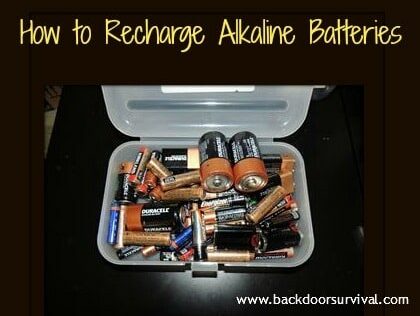

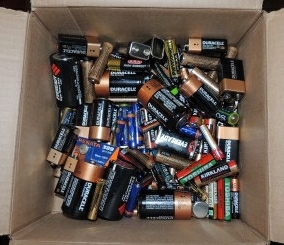
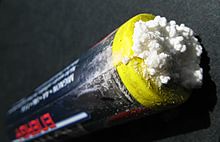
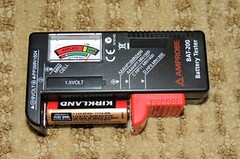
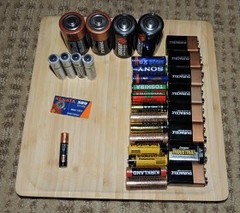

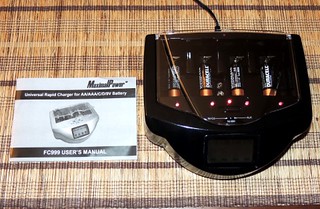
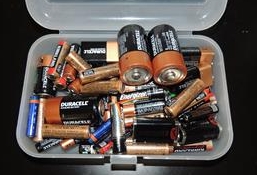
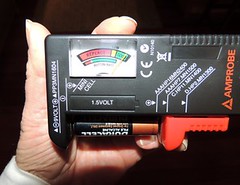
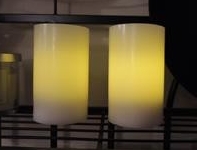









139 Responses to “How to Recharge Alkaline Batteries”
Some electronics will register a battery as dead if it is just low. Digital Cameras are a prime example. Once the battery starts loosing charge, it will stop working… when in fact that battery will work fine in other electronics.
Thank you for a great article, I am on the search now for the charger and reader! We seem to go through a LOT of batteries with 3 kids!
Smoke detectors and carbon monoxide detectors are the worse but that is undoubtedly a good thing. I always use new batteries in them and save the recharged 9V batteries for flashlights and other devices.
Could be a lack of needed voltage.
Hell, I discovered this fifty years ago when I suspected that the warning was a gimmick to keep you buying the expensive alkalines. Being a junior engineer, I just had to try it. It worked. BTW, I also had to find out why Jello warned us not to put kiwi fruit in their product. (The enzyme in it does not allow Jello to set up.)
I have found that when my alkaline batteries show BAD on the charger I can usually “jump start them by connecting them to a small solar panel (1.5v), for 20-30 minutes. Then they show up as CHG on the charger and can be charged per normal. I suspect that any low-voltage DC power source would work. Experiment under safe conditions to prevent leakage, explosion, etc.).
Seriously?! 6 hours to recharge a battery that may last 8 hours in a low-demand device? If you want rechargeable batteries, why not just buy some good-quality Ni-Mh’s or Li-On’s? They’ll charge a lot faster; work a lot better; and you won’t be risking a fire every time you charge them! (Actually, the company who makes your charger- MaximalPower- makes great rechargeable batteries- including OEM-replacements for everything from tools to phones, which I have found to perform better than OEM- which is amazing, as most other after-market replacement batteries I’ve tried were junk)
First, I want to STRONGLY second the comments about not having the charger – OR the newly charged battery – anyplace where fumes, leaks, fire, or a small explosion could create a bigger problem. You are taking a small but nonzero risk of all of these by recharging a battery that was not designed to be recharged. Also, if the battery is even slightly warm to the touch after charging, it could be much hotter internally, and still may leak, vent, or even catch fire for a few minutes afterwards until it cools completely. I’d be wearing gloves and goggles while handling these things, just to be on the safe side. Especially goggles. Burns on skin will heal, but a damaged cornea might not.
Second, I would strongly advise against ever recharging a 9v battery other than one designed to be recharged. It is different than the others in that it is actually six small 1.5v cells wired in series. Some of these will be weaker than others, and over time, will fail. Recharging it, then using it, can force current to flow through the bad cell in the wrong direction. This is the same reason why you shouldn’t mix old and new batteries in the same device, or batteries of different types.
Finally, it pays to have a good quality battery tester. To test a battery properly, you need to test the voltage and/or current it provides under load and over some period of time. A weak battery can produce nearly the right voltage without any load, but that voltage will drop dramatically when connected to a load, due to high internal resistance. It also may properly power a load for a short time, but lose power rapidly during that time. Now, some people, realizing this, will just hook an ammeter across the battery terminals. This is a very bad idea because it can damage the battery, causing risks of fire, leakage, even explosion. A proper battery tester should place the battery under a moderate resistive load, leave it there for a period of time, measure the voltage drop initially and over time, and from those measurements, calculate: (a) the internal resistance of the battery and (b) the approximate amount of charge remaining. I don’t know if even a good tester will do this, but I know for sure that a crappy one won’t, and will therefore give misleading or incorrect information at least some part of the time.
I’d prefer charging Alkalines on a crank generator designed to charge batteries at a low mA rate to prevent the batteries exploding. You can stop periodically to allow the batteries to absorb the energy. I wouldn’t use the Alkalines in my Maglites or radios but they would offer something if they are able to hold a charge even for a little bit. Rechargeables would be the best for sure, but even some rechargeables burst leak and might even pop causing a fire. They are technically safer though because they are designed for charging while Alkalines can only take in a bit of a charge at a time. Charge them for too long, too high of a voltage/mA or throwing them in any charger is asking for trouble. If you get yourself a hand crank battery charger, you can stop for a little bit and then resume cranking, it stops the battery from heating up and reduce leakage. Batteries that leak like the wiki article states, generally happen from self discharging. Heat is another way the battery leaks, leaving them in your flashlight in the car will generally leak.
The batter tester illustrated places a modest load across the cell. About four ohms in my one. A higher resistance across the 9v terminals. This is a reasonable load, and gives a good indication of the cells true state.
Just buy eneloops and do it right,they will safely and reliably recharge for years.They wont leak as essentially all alkalines do eventually.First time you ruin something with a leaking alkaline you will see this isnt the area you want to save pennies in.
Buy eneloops and be done with battery issues for years.Making them quite cheap in the long run.
I agree a THOUSAND percent (if that’s possible LOL). I have had a couple of chargers over the years that purport to charge alkaline batteries. One of them was the one in this article – very informative and well written by the way. BUT I have had enough of them leak, of various brands, to dissuade me from ruining anymore electronics in this endeavor. Incidentally, I had several of them leak after being recharged in this particular charger. I returned it to Amazon a couple of weeks later. I have NEVER had a NiCad or Lithium-Ion battery leak and now use the Eneloop variety exclusively. I’ve been dealing with electronics and charging batteries for many years; trust me – save yourself the headaches and frustration of ruined electronics! In addition, I’ve had “never-recharged” alkalines leak and ruin electronics. The manufacturers used to replace a product ruined by a leaking battery. To my knowledge, this is no longer the case but the leading manufacturers (made in China, of course) will send you a certificate for more of their leaky batteries if you complain.
Gaye, there is one other battery type in both AA and AAA sizes that is rechargeable — and very interesting because of its slightly higher voltage. (I just tested one at random with a voltmeter at 1.78 vdc.) It’s called a Nickel Zinc battery, and is abbreviated NiZn. Fry’s and Big Lots once carried them, but now I can only find them on eBay and Amazon (made in China). There is a special charger (sorry, not solar) sold just for them. That higher voltage does wonders for some things like pocket flashlights, battery powered shavers, etc. I haven’t found any gadget yet that the slightly higher voltage damages, but there may a surprise some day.
Thanks for your insightful articles over the years.
I also have the Maximal Power and use as for my tester. Yep–the remotes, mouse does only have one dead battery–I imagine I have wasted oodles of money discarding perfectly good batteries.
Inexpensive charger from Amazon.
I also have a solar battery charger. Use it often.
Gayle, I learned about batteries while doing the boating live-aboard thing. All batteries test full after charging; they are now at about 65- 70% full. Leave them on trickle 8-12 more hours, and fill them up. Also, high drain and high charge cause them to leak quicker. You can lacquer seal them to prevent the worst of this. Try clear fingernail polish, and Do Not cover the terminal dots. If you want more info, try the boating battery books.
I also am wondering what recharger you are using?
I use the Maximal Power Recharger FC999 that I show in the article.